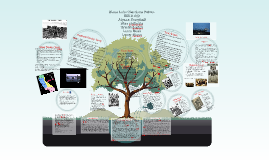History/Background
Transcript: Mono Lake-Northern Paiute EELB 312 Alyssa Campbell Gina Gallardo Kristin Larkin Laura Bush Lacey Slone Wikiups are what the Paiutes called their homes one room dwellings Juniper or willow poles were used along with leaves and brush or whatever natural resources were around The roofs were thatched to help insulate and keep heat inside had a circular floor plan with a shallow pit inside doorway faced due east to welcome the morning sun In Autumn the Paiute Indians would move to the hills north or east of Mono Lake. In Winter the Paiute Indians would move east of Mono Lake to the lower elevation valleys. In Spring the Paiute Indians would return to The Mono Lake basin. Historic Northern Paiute Winter Houses in Mono Basin, California BROOKE S. ARKUSH Journal of California and Great Basin Anthropology , Vol. 9, No. 2 (1987), pp. 174-187 http://www.monolake.org/about/kutzadikaa Unlike marriage which had little ceremony, funerals received considerable emphasis. A traditional funeral observance known as the Cry ceremony was introduced to the Paiutes in the 1870s. Within the next 20 years, it became pervasive in the cultures of the Owens Valley Paiutes and Southern Paiutes. The Cry took place over one or two nights after a person's death prior to the funeral, and then was repeated a year or two later as a memorial. During the Cry ceremony, two groups of singers perform song cycles known as Salt Songs and Bird Songs. The Cry ceremony remained significant throughout the twentieth century. Between the singing, people close to the deceased offer emotional speeches and give away the person's valuables to guests. Read more: http://www.everyculture.com/multi/Le-Pa/Paiutes.html#ixzz2mjb5g5OO Cradle boards (Laura Bush) Location (Gina) Climate change, uncertainty and prehistoric hunter–gatherer mobility Original Research Article. Journal of Anthropological Archaeology, Volume 28, Issue 4, December 2009, Pages 382-396 Christopher Morgan Climate change, uncertainty and prehistoric hunter–gatherer mobility Original Research Article. Journal of Anthropological Archaeology, Volume 28, Issue 4, December 2009, Pages 382-396 Christopher Morgan Climate change, uncertainty and prehistoric hunter–gatherer mobility Original Research Article. Journal of Anthropological Archaeology, Volume 28, Issue 4, December 2009, Pages 382-396 Christopher Morgan http://native-american-indian-facts.com/Great-Basin-American-Indian-Facts/Paiute-Indian-Tribe-Facts.shtml http://www.everyculture.com/multi/Le-Pa/Paiutes.html http://www.everyculture.com/multi/Le-Pa/Paiutes.html Fletcher, Thomas C. Paiute, Prospector, Pioneer a History of the Bodie-Mono Lake Area in the Nineteenth Century. Lee Vining, CA: Artesmisia Press, 1987. 3-6. Print. http://celebratingnevadaindians.info/files/CNI_13_N._Paiute_Student_booklet.pdf http://www.monolake.org/about/kutzadikaa Historic Northern Paiute Winter Houses in Mono Basin, California BROOKE S. ARKUSH Journal of California and Great Basin Anthropology , Vol. 9, No. 2 (1987), pp. 174-187 http://www.leevining.com/businesses/34.htm Traditional Housing (Lacey) Death and Burial Part 3 (Alyssa) Always took place when the tribe would gather together in the fall with dancing Marriage did not have any traditional rituals or ceremonies Only believed in monogamous marriages Paiutes were close with Kuzedika tribe for trading resources so marriages between the two tribes were common from: http://native-american-indian-facts.com/Great-Basin-American-Indian-Facts/Paiute-Indian-Tribe-Facts.shtml arrowhead spears were used to hunt basket weaving was done by the women, They carried them on their backs and either held children or food they gathered digging sticks were used to scrape away dirt bead work smooth wire, square cut nails, & wire nails jack rabbit skins were primarily used for clothing http://www.leevining.com/businesses/34.htm Brine Flies at Mono Lake (Kristin) Materials (Lacey) Paiute indians called their winter homes Tomogani. These homes were domed shaped with a circular floor plan and were primarily used during the winter Juniper posts were used for the structure and walls Smooth wire, square cut nails, and wire nails were used in building these homes Doorways were marked by inward curving juniper posts Historic Northern Paiute Winter Houses in Mono Basin, California BROOKE S. ARKUSH Journal of California and Great Basin Anthropology , Vol. 9, No. 2 (1987), pp. 174-187 References In the summer Groups of the Kuzedika men would travel to the Sierra Mountains in search of big horn sheep They would kill the sheep in the mountains, pack them in snow, and take the meat down to those living in the summer camps at the base of the mountain. during the summer the Northern Paiute people would also hold rabbit drives. Everyone in the tribe, men women and children, helped with the drives. Some held the nets to catch the rabbits, others lit the grasses on fire to drive the rabbits out of their homes. From: Fletcher, Thomas C. Paiute,

















